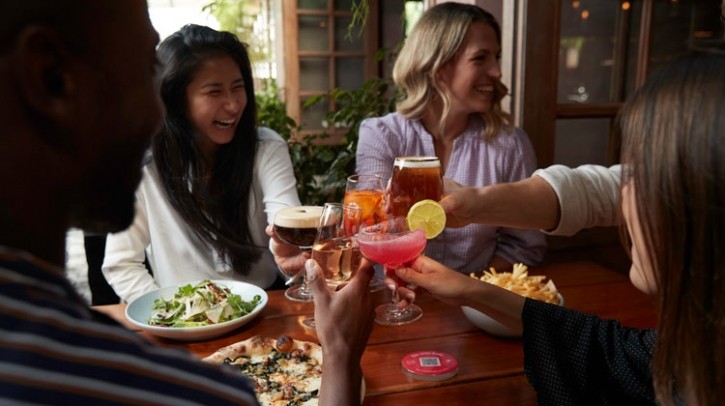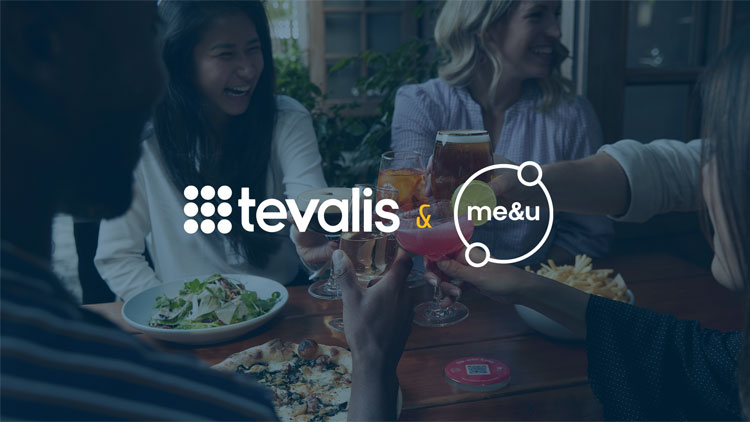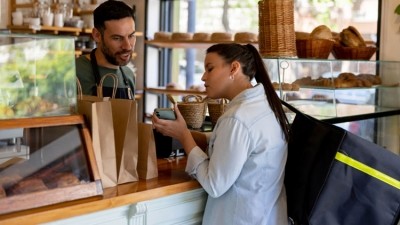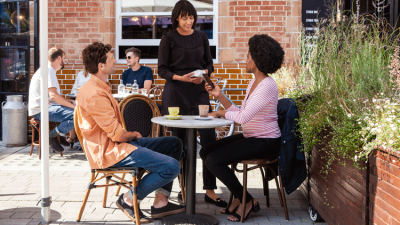Ask the Experts: ordering systems

Ordering systems are a key part of a restaurant’s tech stack. The right product, well integrated will have a dramatic effect on operations and help staff focus on having positive interactions with customers rather than fiddling with terminals and tablets. There has been a lot of change in the ordering space over the past few years. Many restaurants ditched their paper menus and turned to smartphone ordering during the pandemic as a means of limiting contact with staff and customers but soon grew to appreciate the other benefits of the tech, not least the flexibility of digital menus, the reduction of miss orders, the option to add upsells and the potential to reduce staff numbers. As such many businesses have stuck with such ordering systems, often setting them up in a such a way that gives customers the option to either order via their phone or in the traditional manner. To further explore this fast moving space, we caught up with ordering systems expert me&u.
What should operators consider when choosing an ordering system?
Know your why. What business pain points are you looking to solve? Are there bottlenecks in your service flow resulting in long wait times and unhappy customers? Are you facing staff shortages and finding it difficult to service a large venue? Do you perceive lost revenue opportunities due to lack of upsells and are looking for ways to improve your bottom line? Or are you simply trying to attract a younger, more tech savvy customer? Knowing your venue’s pain points, whether operational, customer service or revenue related will help you find an ordering system with the right features to suit your business needs and drive maximum business impact. It’s also worth considering how ordering systems integrate with your wider POS system, the quality of the customer experience, what support is on offer and whether systems can provide timely data and insights.
Content provided by me&u and Tevalis
As consumers began to dine out more frequently following the pandemic, labour shortages put pressure on operational routines and customer service. Hello Oriental needed an innovative solution to help overcome these challenges. With Tevalis’ advanced POS systems, implemented alongside me&u’s smart technology, Hello Oriental could improve efficiency, reduce human error and enhance consumer satisfaction. According to Azim Kourah, managing director of Hello Oriental, “technology plays a big part” in allowing their servers to “spend more time with the guest and engage with them, and ultimately that led to a 98.5% satisfaction rate”. With me&u’s advanced features, Hello Oriental generated over £25,000 worth of additional revenue via intelligent upsells. With efficiency and customer satisfaction at the forefront of our mission, me&u and Tevalis have set out to create an integration solution to industry challenges using the power of advanced technology.
Find out more about what me&u can do for your business here.
How did the pandemic change the ordering systems space?
Before the pandemic, at-table ordering solutions like me&u weren’t widespread. Today they are essential. A new bar has been set and tech is at the heart of it. In a post-pandemic world, customers are craving seamless experiences that keep the drinks flowing and spirits high so they’re not constantly getting stuck at the bar. Human interaction will always be a critical part of the hospitality experience, so striking the right balance is key. Automation and artificial intelligence can help pick up the slack – upselling food, for example, or explaining specials – and free employees to focus on the tasks that demand a human touch. Hospitality businesses were keen to not only get back to business but to establish altogether new ways of working. Many businesses took steps to become stronger, more resilient and more efficient – changes to improve experiences for customers and employees alike. Even now, the restaurant industry continues to face challenges in hiring and retaining staff while dealing with rising operational costs. Which is why venues see the ongoing value in implementing an ordering system as it streamlines processes behind the scenes and has become an important element of customer service.
Ordering systems sit at the centre of a restaurant’s tech stack. What do operators needs to know about integration and compatibility?
Having an ordering system that integrates directly with your POS, payment and marketing systems allows important data to be shared giving you a seamless customer experience, increased operational efficiency and providing a valuable insight into customer behavioural data. Real-time access to sales, order and margin data can help you make data-driven business decisions, while capturing customer data helps you understand their preferences and remarket to them to help drive repeat visits.
What are the advantages of a digital menu?
Digital menus can boost revenue. Customers will spend 5-10% more per order on me&u than traditional ordering methods. The visual menu gives you the opportunity to up-sell and cross-sell using smart data and insights, increasing basket size, reorder frequency and driving repeat visits. Manual ordering is typically, slow and inefficient. The traditional ordering and payment process is full of friction points, exasperated in busier services. Digital ordering increases the speed of the initial order, reorder and payment so customers have more rounds and operators can turn tables faster. Dispensing with printed menus also allows venue’s to change thier offer on the fly. For example our client Hello Oriental’s has a menu that changes on a week-by-week basis so me&u’s technology helps them share this information with consumers easily and gives them flexibility without having to do a traditional specials board. They can have a crazy idea on the Monday, and on the Tuesday have it photographed, ready and out there.
What should operators consider when designing a digital menu?
High quality photography is very important. Specials should be showcased via featured product sections or product videos. If you have different menus or opening times for different sections, design your digital menu to suit by displaying a bespoke menu based on the time or service. For example, run happy hour from 4pm – 6pm. Digital menus allow operators to adjust as they go - if a daily specials change or sell out, update your menu in real time. And don’t set and forget - continuously optimise your menu based on data and insights.
How have changes in consumer behaviour impacted the space?
Consumers are now more connected than ever before. Our phones are smart, our homes are smart but what about hospitality venues? Research we conducted in 2022 told us that 45% of people prefer venues that give them the option of smart technology. 75% of younger venue-goers (Gen-Z) expect that smart technology will be part of almost all venues in the near future, to make the ordering experience more efficient. As we navigate through 2023, the hospitality industry will continue to be driven by evolving consumer preferences. By staying on top of trends and embracing innovation, venues can continue to facilitate exceptional experiences for their customers.
Digital ordering solutions open up the possibility of dynamic pricing – what is your take on this as a strategy for hospitality businesses?
Dynamic pricing is already widely used and accepted in other industries such as travel and retail, so hospitality will no doubt follow suit. We’re focused on supporting hospitality businesses to operate smarter to build a better future for the industry - whether it’s helping them restructure their menu based on margin insights or growing database opt-ins so they can remarket to customers. Customer experience is at the heart of everything we do in hospitality, so if the industry were to explore dynamic pricing, it would need to be considered through this lens.
Are there other sectors that the hospitality sector can learn from when it comes to ordering systems?
Retail and entertainment. Monogrammed purses, custom suits, the Netflix algorithm serves you content based on your preferences. There’s no denying that customers are demanding one-of-a-kind products and experiences. Data and personalisation will power the next generation of hospitality. The ordering platform of the future is hyper-personalised, learning your ‘usuals’ and allowing your best-loved locals to give you an experience, an offer, and a menu specifically tailored to you.
What other new technology is coming down the track that could disrupt the ordering space?
Hyper-personalisation will be the future of hospitality, which will extend in venues, not just in the digital world but tailoring the physical experience to every unique visitor. Imagine being able to control the music, lights, the vibe at your own table, creating a world where the experience on every table will show up differently based on you. Eventually as platforms become more connected, even allowing venues to prompt you to stay for another round of drinks if there’s a surcharge on Ubers home.





































